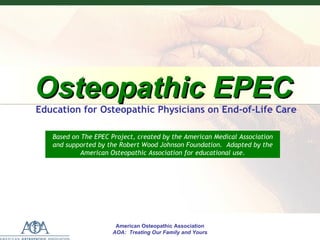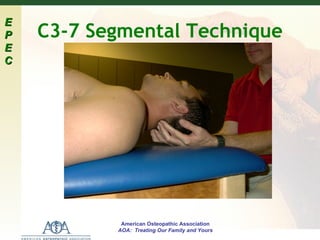The document discusses the use of osteopathic manipulative technique (OMT) in end-of-life care. It describes how OMT can address issues like pain, dyspnea, and gastrointestinal problems through techniques targeting the musculoskeletal system, autonomic nervous system, and biomechanical dysfunction. Specific OMT approaches discussed include myofascial release, counterstrain, and craniosacral techniques. The goal of OMT at end of life is to help normalize the body as it deals with disease burden and the dying process through a compassionate, whole-body approach.









































